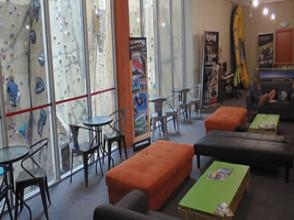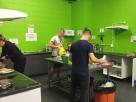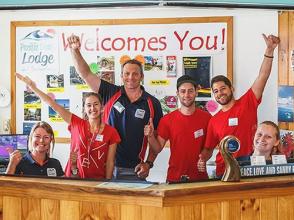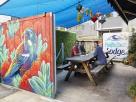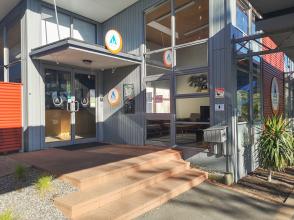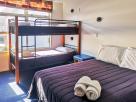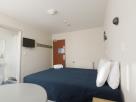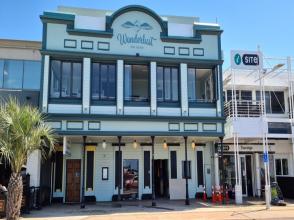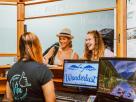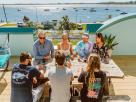Rotorua & BOP Backpackers & Hostels
Currently 22 hostels in this area
Filter by Location: View All , Bay of Plenty (11), Rotorua (10)
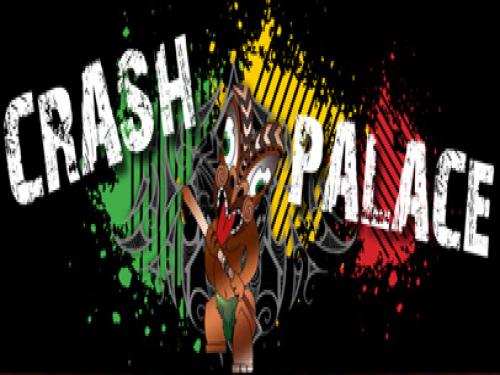
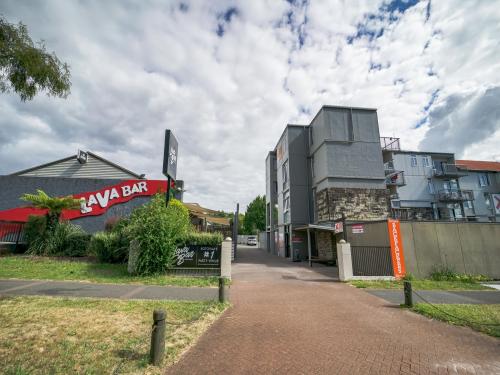
Blistered with geysers, hot pools and thermal streams, the bizarre geothermal world under Rotorua has made it one of the most popular destinations in New Zealand, synonymous around the world with spa resorts and lakeside tranquillity.
Geologically, it serves as a gateway to the more mountainous terrain further north, typified by Mt. Ngauruhoe in the Tongariro National Park, and the faults beneath Rotorua manifest themselves in ways not found anywhere else in New Zealand.
With the numerous fertile lakes surrounding the area, it is no surprise that Rotorua was a hub for Maori tribes, and it was an active site during the Musket Wars of the 1820s. Mokoai Island in the middle of Lake Rotorua was an important 'Pa' (or defensive settlememt) for the Te Arawa tribe, and was the site of an invasion by the Ngaphui tribe armed with muskets traded from the English. Tamaki Village on the south shores of Lake Rotorua celebrates Maori culture with dance and music shows, and trips on the lake in a 'Waku' - traditional wood carved canoes.
If you’ve been backpacking around the North Island and are starting to feel the effects, Rotorua makes the perfect stop off before venturing on further south. With more than dozen to choose from, spas and thermal water baths dominate the town, each offering a range of treatments from mud pools to soda springs heated from beneath the earth.
As you’d expect from such a vibrant hub, Rotorua has a very lively backpacker community, with stacks of hostels to choose from, many with their own pool. Most of the accommodation is clustered around the Government Gardens and Kuirau Park, where there’s also a Top 10 if you’re camping. The town centre itself has a very simple, budget feel to it, and is ideal if you’re looking for an inexpensive place to relax for a few days while working your way around the spas.
Bay Of Plenty
This sweeping crescent lapped by the clement waters of the South Pacific, Bay of Plenty evokes all the imagery after which it was named – fertile and bountiful lands, a temperate climate and beautiful unspoilt beaches. A tour of this region makes it immediately obvious why it was so attractive to Cook in 1769, and why it was established as a trading hub and whaling station once European settlers began to arrive. So attractive was the land in this region that even the Treaty of Waitangi – that great pacifier and moderating conduit through which Europeans and Maori were able to establish peaceable relations – could not quell the competing interests, drawn by the lucrative farming and fishing. In recent decades, the region has found itself a niche, obliging the global explosion in avocados and kiwi fruit.
Nowadays, Bay of Plenty counts tourism among its prosperous attributes, and there is much to see and do. Tauranga, once the site of bitter conflict between Maori and European settlers, has today grown into a truly global city. Still a very important port city, this has helped Tauranga imbibe influence from across the world, with restaurants which would not look out of place on a Parisian walkway. Similarly, Tauranga Art Gallery is considered one of the finest venues in the world for contemporary Polynesian art. A walk along Papamoa Beach under the shadows of Mt. Manganui is an unparalleled work of art itself, with views across the cobalt waters to Motiti and Mayor Islands.
From Tauranga, take a drive down Highway 2 to Matata, then join 35 which closely follows the coast up to beautiful and secluded Waihau Bay. Camp on the beach at easterly most cape of New Zealand, and be woken by the Pacific lapping the fine sand. There is a real feeling of being at the end of the world at Waihau, with the thick canopy of rewarewa, totara and beech trees extending toward the beach edge contrasting the endless distance of the Pacific.

